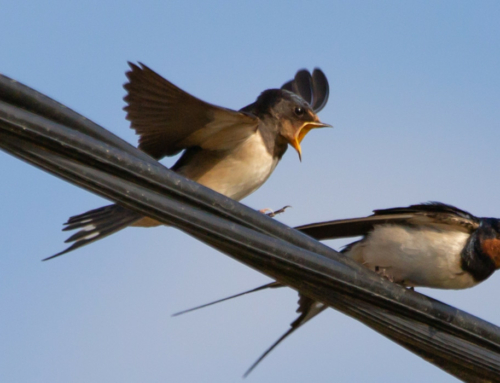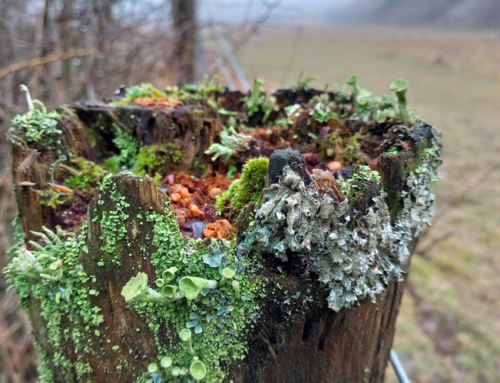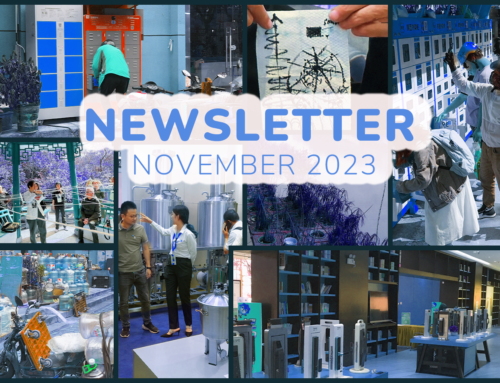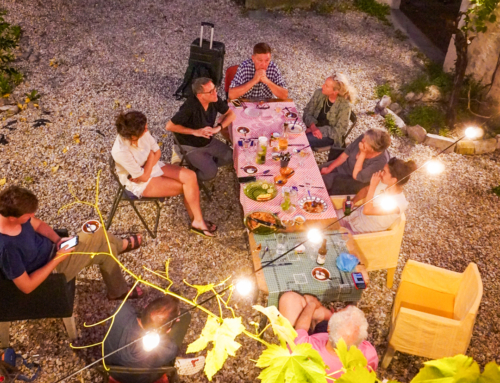READING SMALL SIGNALS
We’ve invested huge resources over the ages to keep the man-made world, and nature, separate – but there are signs everywhere that those those priorities are changing. Working through the consequences of that is a challenge for us all.
Many signals of change are small on their own but, taken together, tell a new story. There’s the new scheme in England, called Hummingtree, that connects office-bound workers with living systems by means of a ‘wild mirror’; each workspace is twinned with an equivalent patch of forest that’s being regenerated. In gritty Oakland, I learned that urban forests, living walls, and green roofs are being used to filter air, water and soil in and around its ports. I also saw the ad for a ‘wildflower farm apprentice’ to help a social enterprise trade wildflower seeds; that kind of work didn’t exist a few years ago. Neither did de-paving, food co-ops, river restoration, edible forestry, or pollinator pathways – but examples like these are cropping up all over. At multiple scales, this combination of social and ecolgical innovation adds up to living concepts of infrastructure.
The how is as important as the why. Back in England there’s the small farm that has 8000 landlords. Shares in the farm cannot be traded on the open market, but this shared ownership model enables the community to share responsibility – with the farmer – for growing food. This approach would be a great addition to a project I visited in California called The Food Commons. Launched at the epicentre of global agribusiness, this inspiring prototype combines social, political and technical innovation.
Other signals of change are so scattered that they can go unnoticed. In China, so-called ‘battery-bikes’ are outselling cars by four-to-one – but this story is missing from Western media. In The Two-Wheeled City I argue that a system-wide phase-shift in transportation is gathering pace. In Belgium, a project called Mobilotoop, about cloud commuting, is further evidence of an asset-light mobility ecosystem in which networks are used to share equipment and infrastructure. (I describe other ingredients to help a cycle commerce ecosystem flourish in Cycle Commerce: The Red Blood Cells of a Smart City).
Some signals of change point in contradictory directions. In Ethiopia, an inspiring social enterprise called Sole Rebels – the world’s first Fair Trade shoe brand – employs and trains highly marginalized people; uses organic and bio-based materials; and obtains its leather from free-range cattle herders. But Sole Rebels must compete with a vast new project called Shoe City, also in Ethiopia, whose 200,000 guest workers are paid ten times less than workers on China.
Two recent texts of mine – A Whole New Cloth: Politics and the Fashion System, and Keep Your Stuff Alive – explore this core dilemma for fashion: despite more than 400 eco labels, an incremental ‘do less harm’ approach has addressed the symptoms, but not the principal cause, of our difficulties – a perpetual growth economy.
Some brightly flashing signals divert our attention from more important developments. Last December’s G8 Dementia Summit, for example, grumpeted the fact that one hundred million pounds will now be spent in a race to identify a cure or a ‘disease-modifying therapy’ for dementia. In The Dementia Care Economy I argue that the likely outcome will be the creation of a Dementia Industrial Complex – and the mass production of un-met expectations. Recent personal experience has reinforced my strong belief that the presence of human beings – not labour-saving technology – should be the priority.
The most promising innovations in the ways we care for each other – from child care, to dementia support – involve collaborative service networks. These empower family members and volunteers to work in equal and reciprocal relationship with professionals. In a conversation with Michel Bauwens, founder of the P2P network, I learned that the rise of social co-operatives represents a new frontier in the shifting boundaries of public, private, and commercial spheres. In global law and governance, too, the concept of Buen Vivir or “good living” manifests a political concept of citizenship that includes all life, not just human life.
Although, taken together, these signals tell a new story about where we’re headed, the story remains stubbornly obscure. In The Desert Of The Real – my contribution to the Puma Sustainable Design Lecture series – I argue that we need to cultivate greater perceptual diversity, and new ways of knowing, if we’re to meet our ecological responsibility towards future generations.
DOORS OF PERCEPTION TALKS AND WORKSHOPS
My talks and Xskool workshops – which you can read more about here and here – explore the above questions in unique contexts: What are the key social-ecological systems in this place? how night one design in them? and, how does one get started?
CONTACT
Contact me (John Thackara, Doors of Perception) by email at john (at) doorsofperception (dot) com
Blog doorsofperception.com
Twitter @johnthackara https://twitter.com/johnthackara
LinkedIn http://www.linkedin.com/profile/view?id=139933&trk=tab_pro





